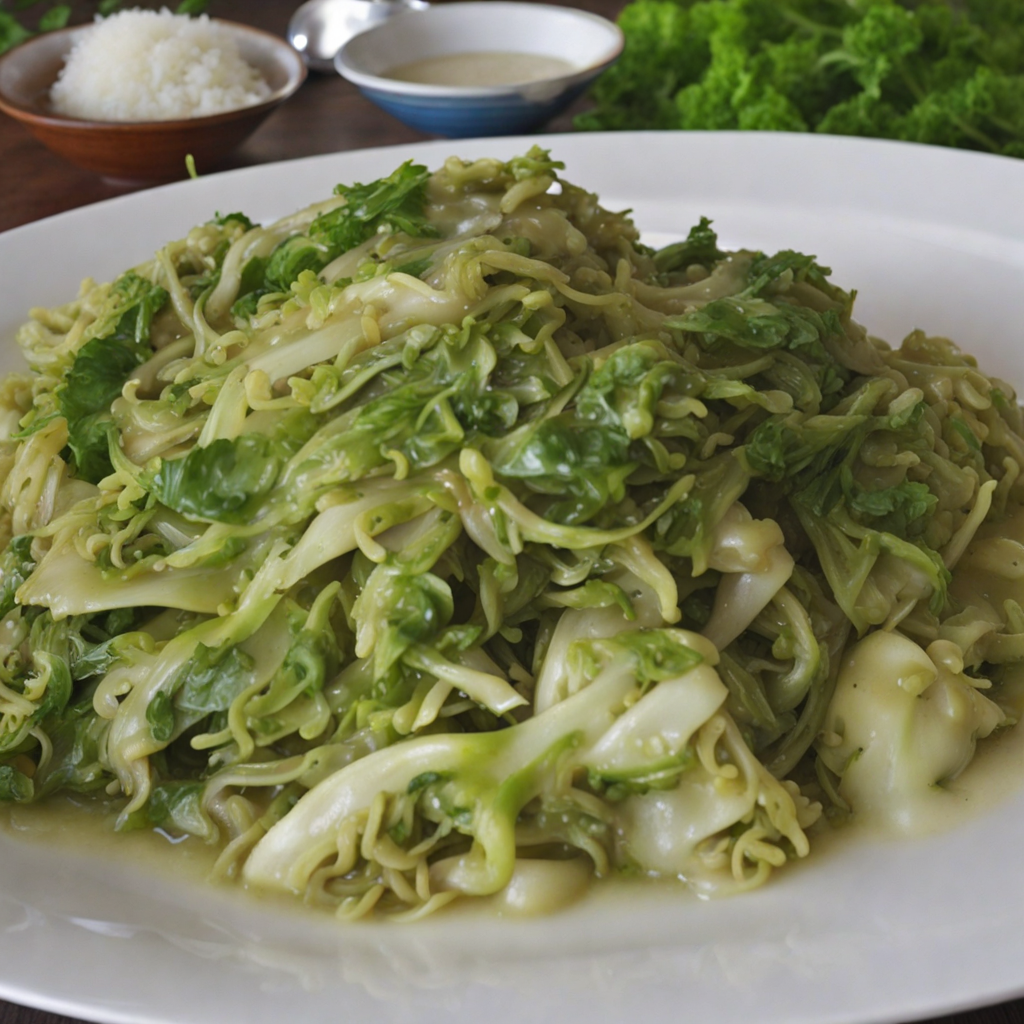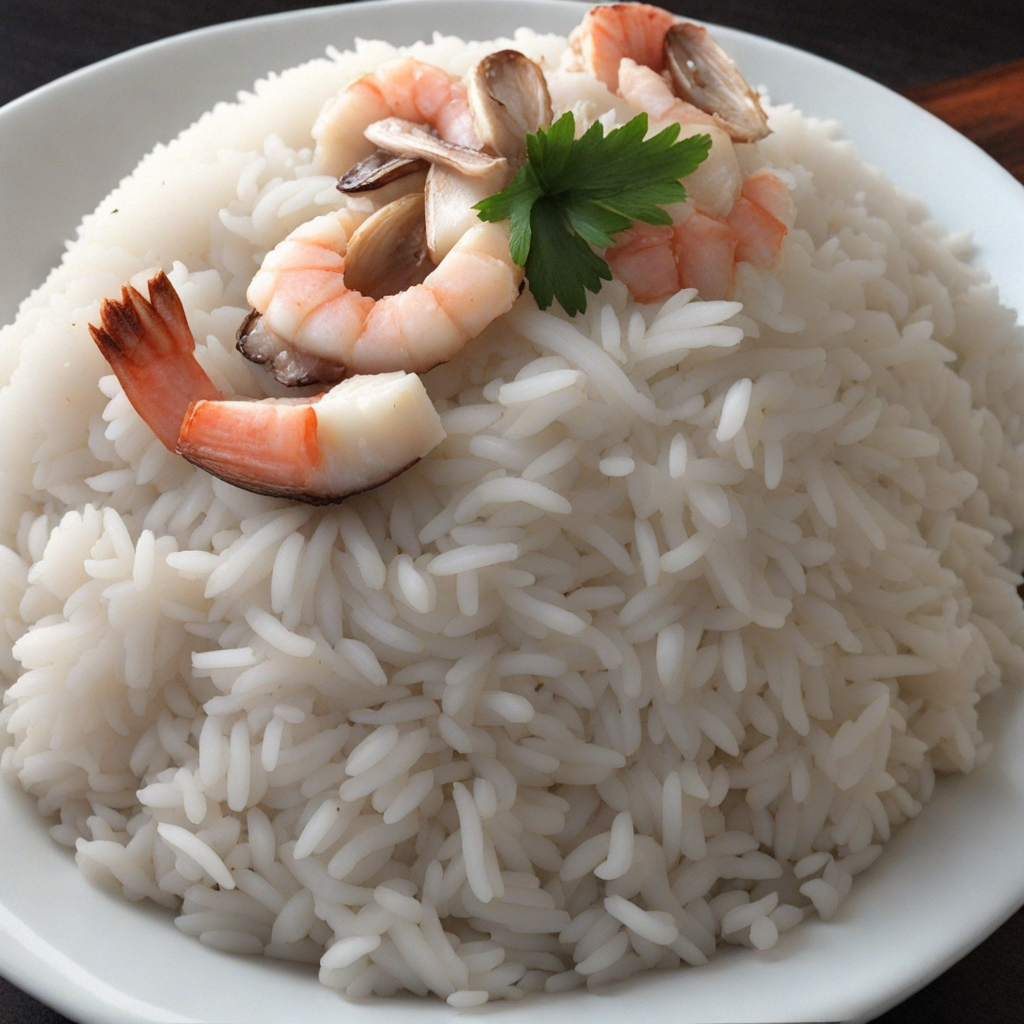Slippery Cabbage
Slippery Cabbage, known locally as 'Kailao', is a unique and cherished dish from the Solomon Islands that showcases the rich culinary heritage of the region. This dish is primarily made from the leaves of the taro plant, which are cooked until tender and possess a distinctively slippery texture, hence the name. The leaves are often mixed with coconut milk, lending a creamy richness that perfectly complements the natural earthiness of the taro. The dish is sometimes enhanced with fresh herbs and spices, such as ginger and chili, which add layers of flavor and a subtle kick, making it a delightful experience for the palate. The cooking technique for Slippery Cabbage is as important as the ingredients themselves. Traditionally, the leaves are wrapped in banana leaves and steamed, allowing the flavors to meld together beautifully while infusing the dish with a hint of sweetness from the banana. This method not only preserves the nutrients but also enhances the dish's aromatic profile, making it a favorite among locals and visitors alike. The result is a dish that is both comforting and vibrant, often served as a side alongside grilled fish or meat, further enriching the dining experience with contrasting textures and flavors. What sets Slippery Cabbage apart is its versatility; it can be enjoyed in various ways, whether as a main dish or a side, and can be easily adapted to suit different tastes. Many families have their own variations, adding ingredients like smoked fish or diced vegetables, which can transform the dish into a heartier meal. Eating Slippery Cabbage is not just about the flavors; it's about a cultural connection to the land and traditions of the Solomon Islands, making it a must-try for anyone looking to explore new and exciting culinary landscapes.
How It Became This Dish
Slippery Cabbage: A Culinary Treasure of the Solomon Islands In the vibrant tapestry of the Solomon Islands’ culinary heritage, few dishes evoke the same intrigue and affection as Slippery Cabbage. Known locally as "Kailao," this dish is not just a staple food; it is a symbol of the islands' rich history, cultural practices, and deep connection to the land and sea. To understand Slippery Cabbage is to embark on a journey through the islands’ past, exploring the origins, cultural significance, and evolution of this beloved dish. Origins of Slippery Cabbage The Solomon Islands, an archipelago comprised of over 900 islands, has a diverse range of flora and fauna, much of which plays a pivotal role in the local diet. The origins of Slippery Cabbage can be traced back to the indigenous practices of the Solomon Islanders, who relied heavily on local ingredients and traditional farming methods. Cabbage, specifically the variety known as "kailao," is native to the region and has been cultivated for centuries. The name "Slippery Cabbage" refers to the dish's unique texture, which is achieved when the cabbage is cooked with coconut milk. The slippery consistency is not merely a culinary quirk; it reflects the islands’ agricultural practices and the importance of coconuts in daily life. Coconuts are ubiquitous in the Solomon Islands, providing not only food but also materials for shelter, tools, and cultural artifacts. The combination of cabbage and coconut milk in Slippery Cabbage embodies the harmonious relationship between the land and its people. Cultural Significance Slippery Cabbage is much more than a simple dish; it carries profound cultural significance. In the Solomon Islands, food is an integral part of identity, social structure, and community life. Meals are often communal, celebrating relationships and shared experiences. The preparation and consumption of Slippery Cabbage often occur during significant events, including feasts, weddings, and festivals, where it is served alongside other traditional foods, such as fish, taro, and yam. In many ways, Slippery Cabbage represents resilience and resourcefulness. The dish is made with easily accessible ingredients, reflecting the islands' emphasis on sustainability and self-sufficiency. For generations, families have cultivated cabbage and harvested coconuts, passing down knowledge and techniques through oral traditions. The preparation of Slippery Cabbage can also be a communal activity, bringing family and friends together in the kitchen, where stories are shared, and bonds are strengthened. Moreover, Slippery Cabbage holds a special place in the spiritual and cultural practices of the Solomon Islanders. Certain preparations and rituals associated with the dish are believed to connect the cook with their ancestors, honoring traditions that have been maintained over centuries. Food in the Solomon Islands is often imbued with spiritual significance; thus, Slippery Cabbage is not merely nourishment but a conduit for honoring the past. Development Over Time As the Solomon Islands have navigated the tides of change—colonization, globalization, and modernity—Slippery Cabbage has evolved while maintaining its core essence. The early 20th century brought significant socio-economic changes to the islands, including the introduction of new agricultural practices and the influence of foreign cuisines. However, despite these external influences, Slippery Cabbage remained a fixture in local diets. With the advent of tourism in the late 20th century, Slippery Cabbage began to gain recognition beyond the shores of the Solomon Islands. Visitors intrigued by the islands' culinary traditions sought authentic experiences, leading to the dish being featured in restaurants and culinary festivals. Chefs began to experiment with Slippery Cabbage, pairing it with a variety of proteins, such as grilled fish or chicken, while still honoring its traditional roots. In recent years, there has been a resurgence of interest in indigenous foods and traditional cooking methods, fueled by a broader global movement towards sustainability and local sourcing. Many young chefs from the Solomon Islands are now advocating for traditional dishes like Slippery Cabbage, emphasizing its nutritional value and environmental sustainability. This renewed focus on indigenous cuisine has led to a revival of traditional farming practices, ensuring that the ingredients essential to Slippery Cabbage continue to thrive. Furthermore, as climate change poses threats to the food security of island nations, there has been an increasing emphasis on preserving local biodiversity and traditional food practices. The cultivation of local varieties of cabbage and the sustainable harvesting of coconuts are vital for maintaining the integrity of Slippery Cabbage as both a dish and a cultural symbol. Conclusion Slippery Cabbage is more than a culinary delight; it is a historical narrative woven into the fabric of the Solomon Islands. From its humble origins as a local staple to its contemporary status as a symbol of cultural pride and sustainability, Slippery Cabbage embodies the resilience of the Solomon Islanders. As the world becomes increasingly interconnected, this dish serves as a reminder of the importance of preserving local food traditions and honoring the land that sustains us. Ultimately, Slippery Cabbage is a testament to the enduring spirit of the Solomon Islands—a dish that nourishes not only the body but also the soul, connecting generations through shared flavors, stories, and cultural practices. As it continues to evolve, one can only hope that Slippery Cabbage will remain a cherished part of the Solomon Islands’ culinary landscape for generations to come.
You may like
Discover local flavors from Solomon Islands







